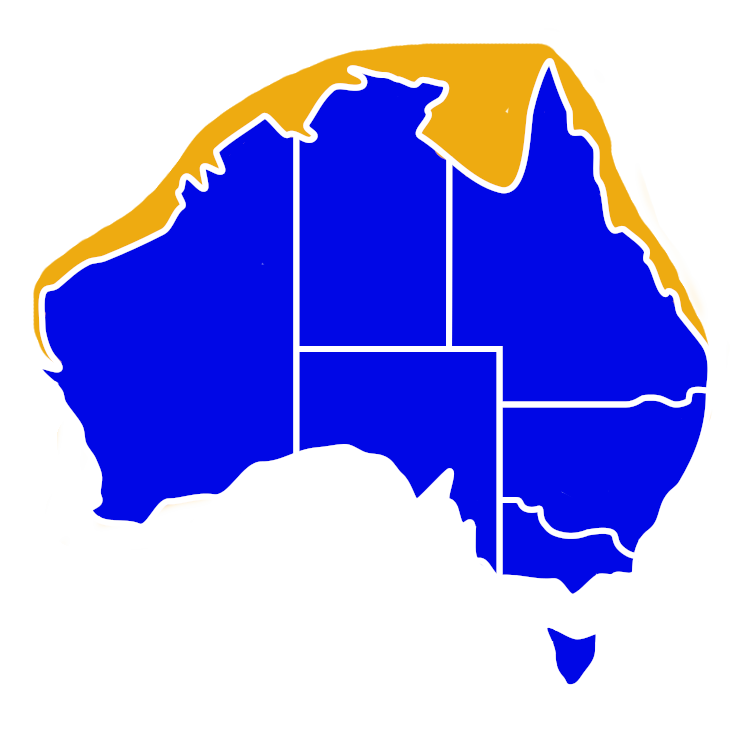Quick Facts
Distribution

Interesting Info
- The Slender Scad is a speedy, silvery schooling fish with a long, pencil-slim body and a tiny black spot on the gill cover.
- In Australia it lives mainly across the tropical north—most reliably off north-western Western Australia and into the Northern Territory and Queensland. Records from southern Australia are considered mistakes.
- Around the world it ranges widely through warm Indo-Pacific waters and even reaches the southeast Atlantic and the eastern Pacific, including the Galápagos.
- Adults usually measure 20–30 cm (8–12 in), and the biggest reach about 35 cm (14 in) total length.
- It is a mid-water fish that forms glittering schools over reef slopes and along the edges of deep water.
- They sip tiny drifting animals called zooplankton, plus small crustaceans and other bite-sized invertebrates.
- At times schools bunch up into shining “bait balls” that attract tuna, mackerel, and other fast predators.
- Like many small pelagic fishes, they grow fast and don’t live long—most only a few years.
- Spawning happens offshore with eggs released into open water, babies drift with the currents before moving to coastal nursery areas.
- The exact breeding season changes by region—some populations spawn in late winter to spring, others in mid-year.
- They play a big role in the food web—turning tiny plankton into energy for larger gamefish, seabirds, and marine mammals.
- People in many tropical countries eat them fresh, salted, or dried, and anglers often use them as prime bait for bigger fish.
- If you look closely, you can tell them from similar scads by the very slender body, short pectoral fins, and a small black spot on the gill cover.
Species Interaction
Recreational & Commercial Fishing, Snorkelling & Diving
Recreational anglers most often meet Slender Scad as lively bait for bigger predators like tuna and mackerel, though light-tackle fishers may catch them around reef passes and drop-offs. Snorkellers and divers sometimes see fast-moving, tightly packed schools flashing silver in the blue. Commercially the species supports small-scale fisheries in many Indo-Pacific countries and is commonly sold fresh, salted, or dried.
Scientific Classification
Kingdom: Animalia
Phylum: Chordata
Class: Actinopterygii
Order: Carangiformes
Family: Carangidae
Genus: Decapterus
Species: Decapterus macrosoma
Conservation Status
The Slender Scad is listed as Least Concern by the IUCN. It is widespread and abundant, though heavily fished in some regions for food and bait; maintaining healthy coastal and shelf habitats helps keep populations stable.
Fish Taste Quality
Slender Scad are edible and their flesh is soft to moderately firm with a mild flavour and a slight oiliness. Best cooked very fresh—grilled, fried, or dried/salted—because small scads can spoil quickly if not chilled.
Taste Rating: 3/5
How to catch
Slender Scad
Catch Difficulty: Easy
Tackle: Patternoster Rig, Artificial Rig, Fish Trap
Bait: Fresh cut flesh baits, Lures, Feather jig, Bait jig, Prawns, Worms
Technique: Slowly sink bait towards bottom, Cast bait/jig/lure near schooling fish, Bait in a fish trap
Popularity: Targeted
Recreational Viewing
- Snorkeling & Scuba
Finding: Easy
Temperament: Peaceful
Location: Outer Reef, Lagoon
Danger: None





